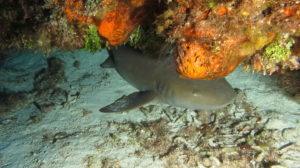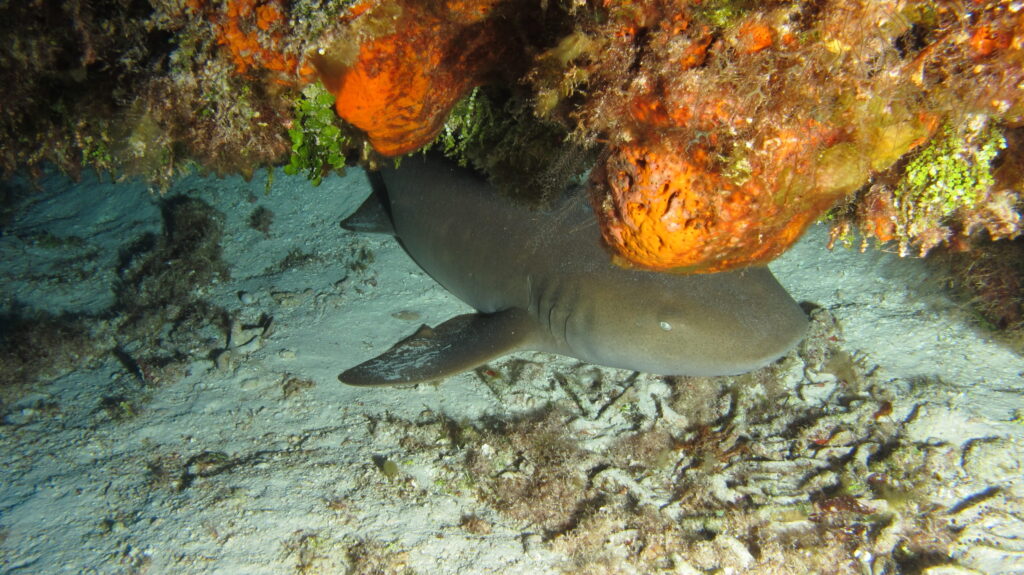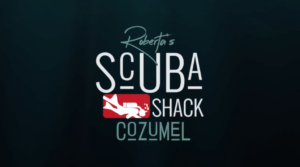As a diver one of the frequent questions I’m asked is, “Aren’t you afraid of Sharks?” to which I usually reply, “No we actually go looking for them”. Jaws gave sharks a really bad rap. Take for instance the shark referred to as the Couch Potato, aka the Nurse Shark.
 A few sharks like the Great White, Mako and Whale Shark need to be constantly moving to pass water over their gills to breath. But the Nurse shark is like the majority of sharks that use an oral muscles to actively suck water into their mouths allowing them to lie on the sea bed for long periods of time. When a Nurse shark does decide to move, it lazily swims along at a speed reminiscent of a Sunday stroll. They typically swim slower, 1.5mph/2.4 kph, the average person swims about 2 mph/3.2 kph. But when they need to hunt, they are capable of bursts of speed up to 25 mph ! Click on the two images below to see two quick Nurse Shark Videos.
A few sharks like the Great White, Mako and Whale Shark need to be constantly moving to pass water over their gills to breath. But the Nurse shark is like the majority of sharks that use an oral muscles to actively suck water into their mouths allowing them to lie on the sea bed for long periods of time. When a Nurse shark does decide to move, it lazily swims along at a speed reminiscent of a Sunday stroll. They typically swim slower, 1.5mph/2.4 kph, the average person swims about 2 mph/3.2 kph. But when they need to hunt, they are capable of bursts of speed up to 25 mph ! Click on the two images below to see two quick Nurse Shark Videos.
Then there is their looks. You don’t see large menacing teeth protruding from their mouths. Instead they have two little “whiskers” on their nose which are called Barbels which contain taste buds that they use for searching out prey in the sand. They hunt at night out of the prying eyes of most divers, using their Barbel’s to seek out a wide variety of prey on the sea floor including: Conch, Sea Urchins, Octopus, Stingrays, fish, and Spiny Lobsters.
Nurse Sharks aren’t known to be migratory and don’t even like deeper water. Their typical depth is between 3 and 40 ft (1-12m), because like Roberta, they don’t like the colder water at depth.
Mating season is from May to July and a female will often mate with multiple males. The fertalized eggs grow inside of the female, and then exit the egg sack and live off of that until they are ready to hatch. Five to six months later she gives birth to 21-29 pups from a variety of males. The Coach Potato of the shark family then won’t mate again for 18 months. Can you blame her after giving birth to over twenty pups?
Nurse Sharks are not usually aggressive but can bite when provoked. According to the International Shark Attack File (ISAF) there are only 33 of the 440 types of sharks that have been implicated in attacks on people. The Nurse shark is one of them though with 9 non-fatal, unprovoked attacks recorded. Click the image to the right to see a Nurse Shark swimming amongst of group of divers.
I did have an encounter with one a couple of years ago on Palancar Pinnacles. There was plenty of room as the group followed Rudi our Dive Master in open water between two pinnacles. So then why did my dive partner keep bumping into me? Annoyed I finally looked back and instead of my buddy there was a 6 ft Nurse Shark. It nudged my legs again and swam past. Then it circled back and passed within inches in front of me. It preceded to very closely check out each member of the dive group. It wasn’t until after the dive we realized that it was looking for a easy meal of Lion fish that Rudi had on the end of his spear.
That was certainly a memorable dive and a reminder to not take anything for granted. These gentle, almost lethargic creatures are still sharks and while certainly not Jaws, are not always the couch potato either.
Thanks Greg Harvey for another great article !



